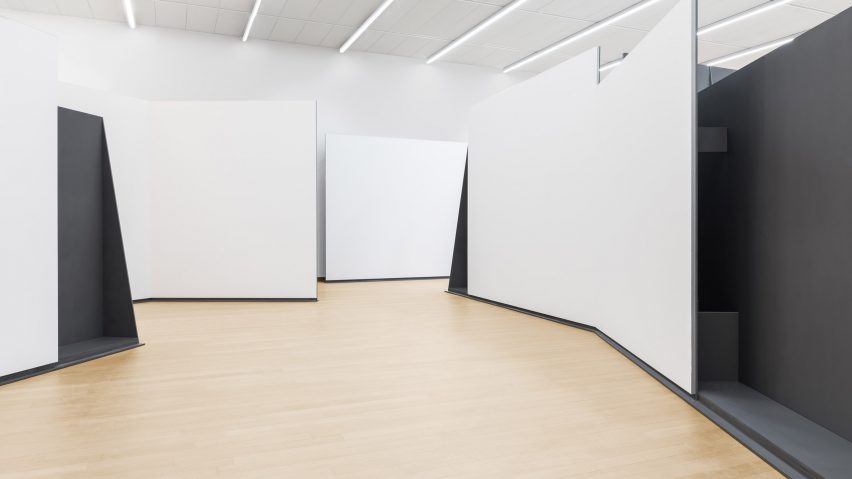
AMO creates "open-ended" display system for Amsterdam's Stedelijk Museum
OMA's research and design studio AMO has created a display system made up of 43 slim free-standing steel walls for the permanent collection of Amsterdam's Stedelijk Museum.
Called Stedelijk Base, the light and flexible display system features freestanding walls made from 15-millimetre-thick steel plates developed by Tata steel in the Netherlands.
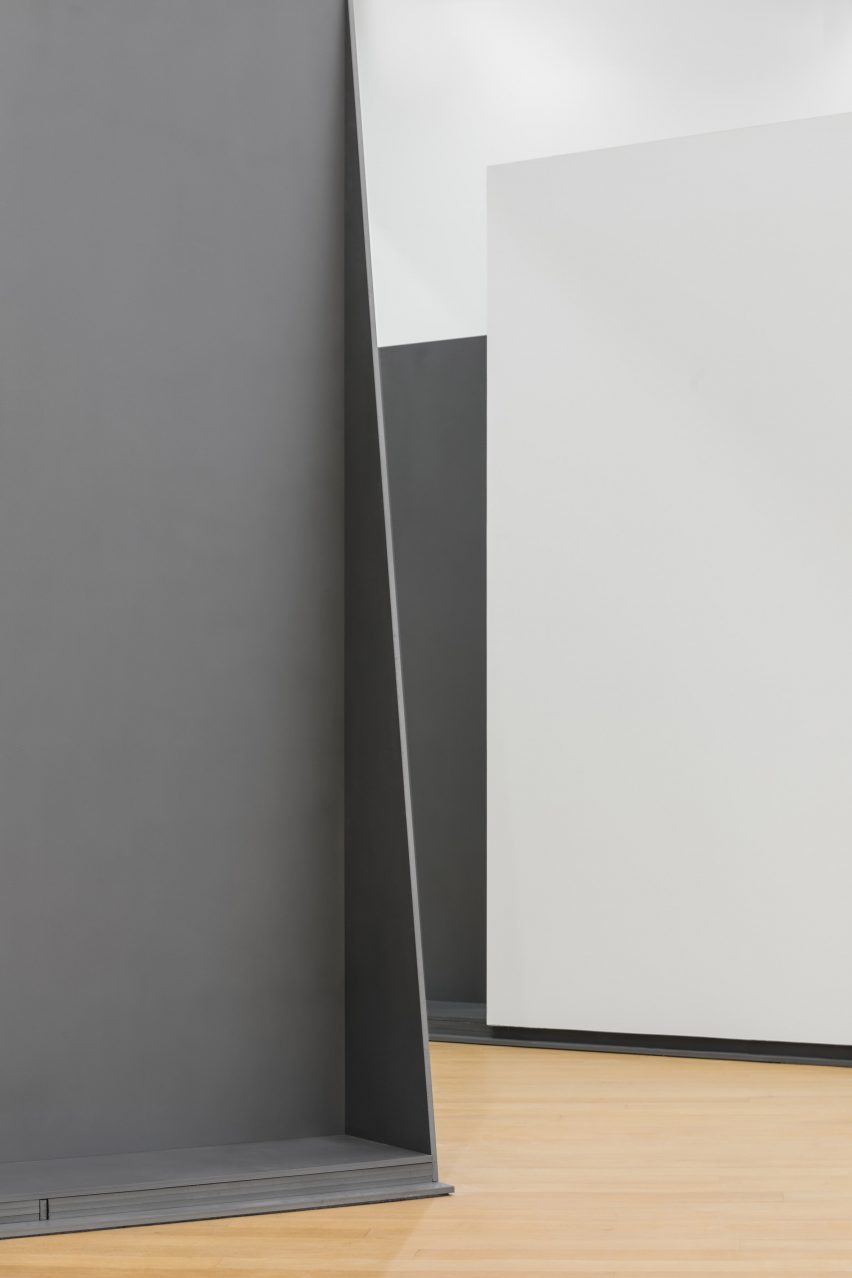
The laser-cut pieces are then coupled together to create solid and stable triangular structures.
"In a productive collaboration with Stedelijk, Arup and Tata Steel, we have created walls like screens, thanks to the slimness of the steel structure," said Rem Koolhaas, OMA and AMO founder.
"These enable a lightness and flexibility in navigating the exhibition space, and encourage the viewer to take different paths in the space, as adventurous as circulation through any city," he continued.
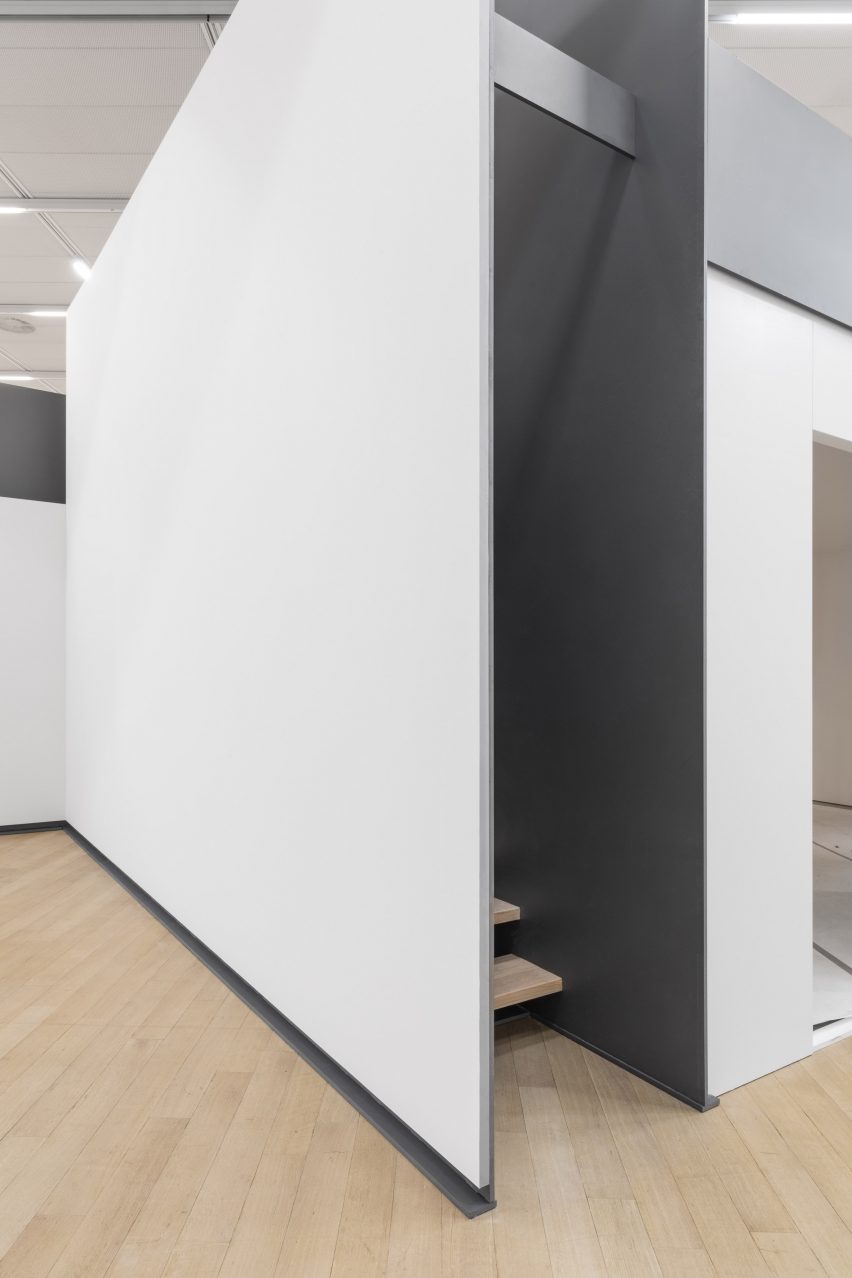
The display is located in the museum's Lower Level Gallery, which until now was only used for temporary exhibitions.
Instead of breaking the space into smaller rooms, the assembled walls enable the collection to be presented as a whole – chronologically along the perimeter of the gallery space, and thematically on the steel walls which intersperse the gallery.
Each of the 45 millimetre-thin walls is devoted to a specific aspect of the collection and feature vitrines and platforms for displaying art and design objects.
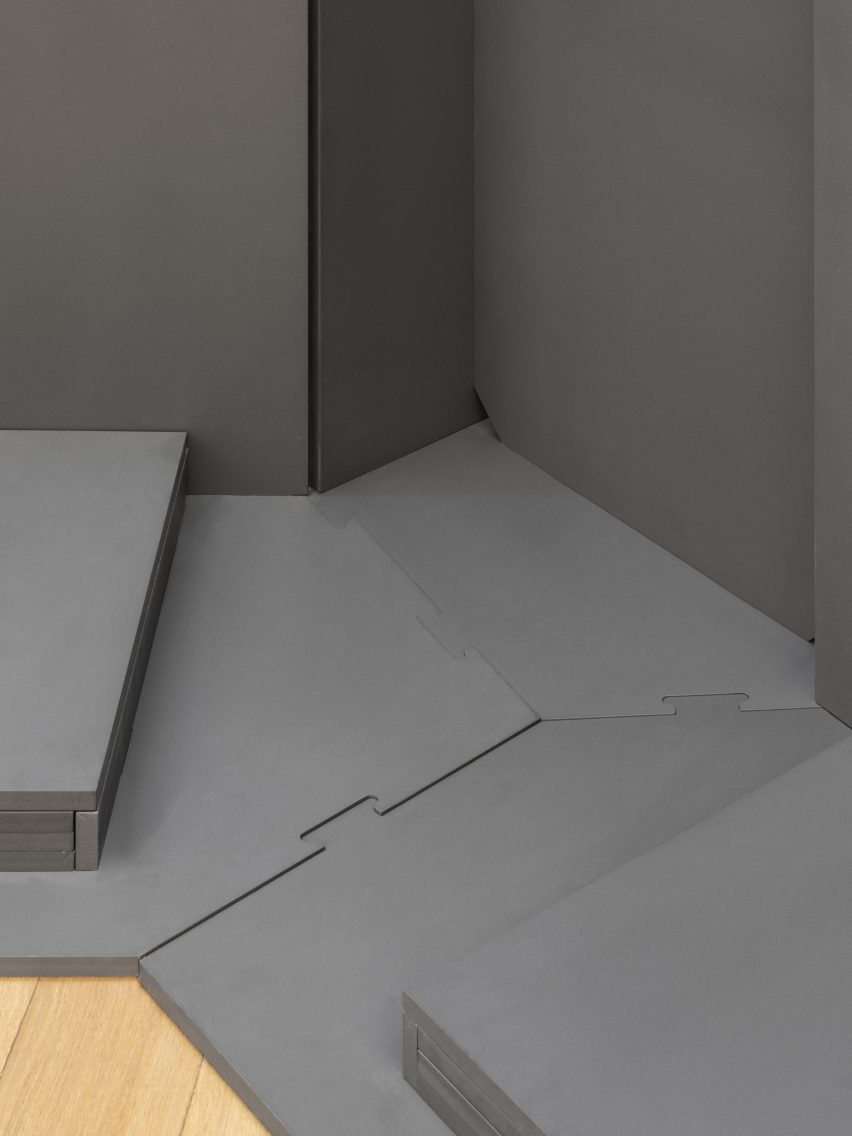
Rem Koolhaas and Federico Martelli, who led the project, worked closely together with the curators, researchers and technical staff of the Stedelijk Museum for almost two years – exploring its archives and collections.
During this time, they said "a complex matrix of relations between artworks and objects in the collection" emerged, which in turn influenced the architecture of the display system.
The display's open-ended layout was designed so that visitors can forge their own path through the collection and make unexpected connections between modern and contemporary art and design from 1880 until 1980.
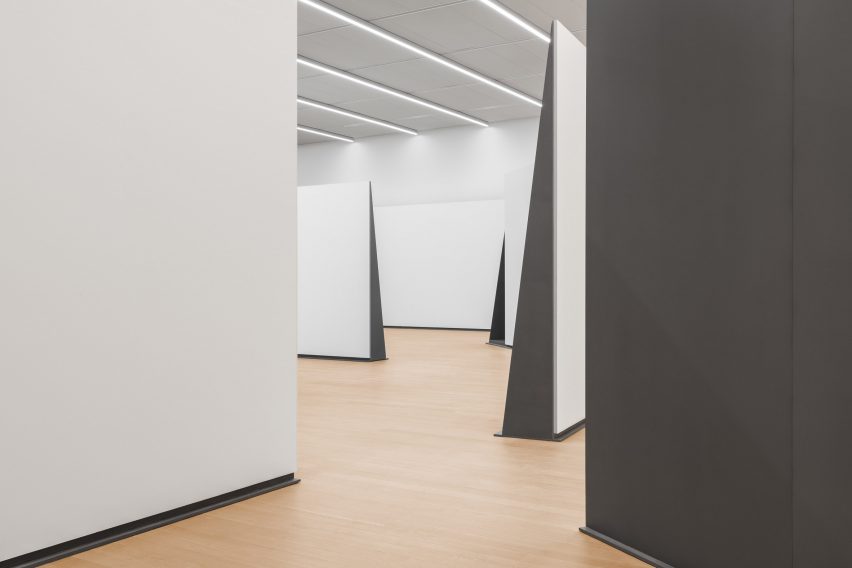
To ensure that the display met strict standards of stability, vibration and security, AMO worked in close collaboration with Arup engineers to design and fabricate the thin yet solid walls.
"The exhibition responds to new ways of absorbing information," said Martelli. "Viewers have become capable of focusing on many things at the same time, and the multiplicity of information in our environment stimulates our curiosity."
"While the organisation of the exhibition responds to thorough research of the museum's collection," he continued. "It is not rigid, we have designed a landscape which allows visitors to discover associations between various artworks and objects."
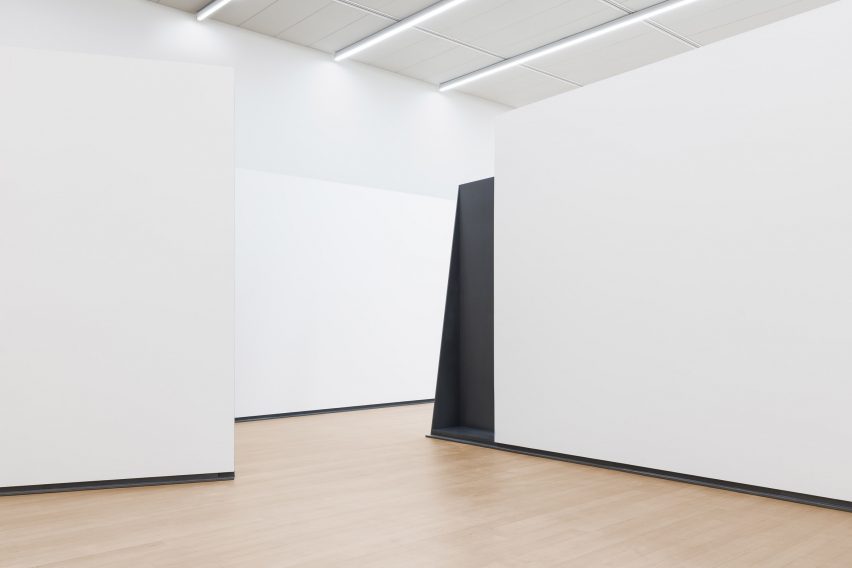
Stedelijk Base is not the first artwork display system designed by the Rotterdam-based office, and in a statement, the studio explained that the design is an evolution of two previous temporary exhibitions it created.
The first is the Elements of Architecture exhibition at the 2014 Venice Biennale, which the studio says was the starting point for "reconsidering the role of walls as building elements that were initially structural, but that have become mere partitions".
In addition, AMO designed the exhibition display of Serial and Portable Classic for the Fondazione Prada, which reexamined traditional notions of displaying classical sculpture on a pedestal.
Photography is by Delfino Sisto Legnani and Marco Cappelletti.